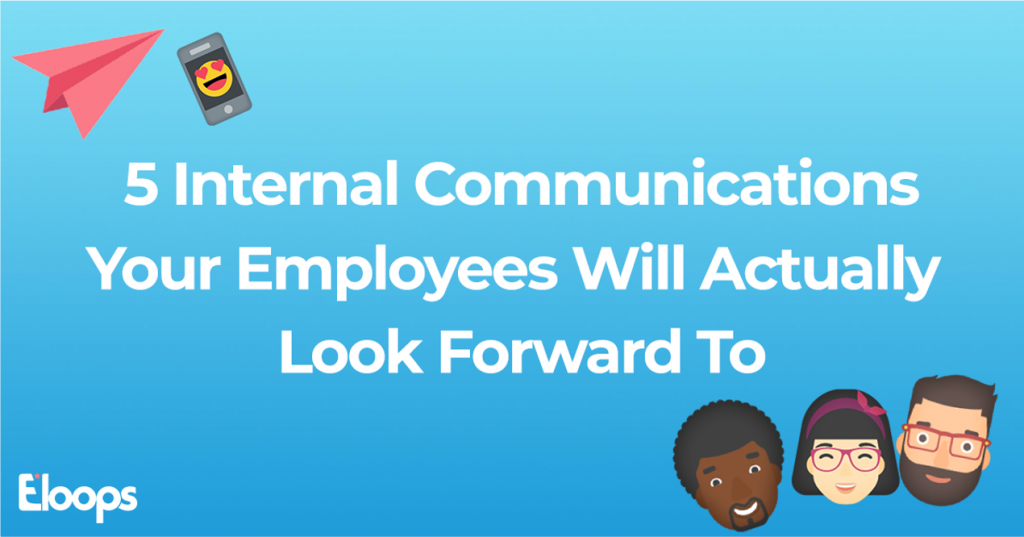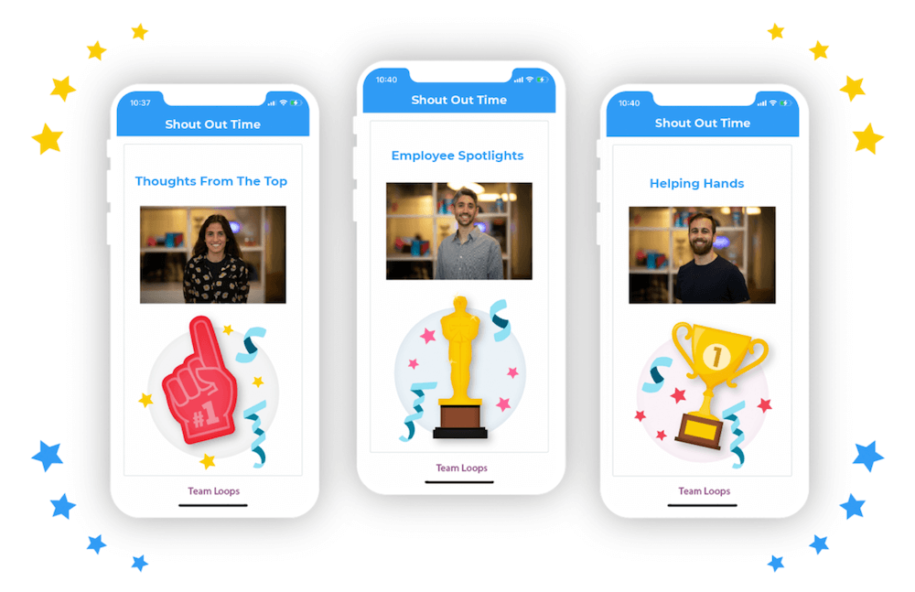As we move past the tumultuous events of the early 2020s, employee engagement is of paramount importance. When workers feel a personal connection to the business, they’re more inclined to do their best work. That’s where internal communications come into play.
Internal communications are more than just a PR strategy. They’re instrumental in making the business feel like a community and not just a workplace.
Sadly, it can be hard to cut through the noise and ensure that your internal communication is heard, as the majority of employees ignore most internal communications.
At Eloops, employee engagement is our passion, and we love to share what we know works! More now than ever, it’s essential to foster that sense of belonging. The results speak for themselves – the same success is evident across every organization that leverages internal communications as a powerful tool to boost employee engagement – improved productivity, mood, and revenue (so don’t miss the opportunity to do the same). These internal comms strategies will help your company stay one step ahead.

Thoughts From The Top
Often, upper management can seem intimidating to low-level workers. Managers and supervisors might have names and faces, but what are they thinking about when they’re not overseeing their respective departments? When you implement “Thoughts From The Top” as an internal comm strategy, you’ll be able to provide some insight.
Invite the department heads to use a workplace communications platform to share their thoughts on various subjects. They should be short and relatable but informative enough to keep people reading.
“Thoughts From The Top” topics could range from trends relating specifically to the business, current global events, and more casual topics like the latest film releases. The idea is to put a human face on the higher-ranking staff members so they feel less like overlords and more like part of the team.
Cross-Connections
Have you ever noticed how difficult it can be for members of different departments to engage with one another? Sometimes, they don’t even know each other’s names. Even if they do, they have so few opportunities for interaction that they might as well be strangers.
Encourage employees to use this platform as a way to share what they do in a typical workday. That way, members of other departments will see how their tasks interrelate to maintain the flow.
Many employees will find this exercise interesting, but that’s not the only perk. It will also allow them to reflect on their roles within the company and feel valued in their own right.
Employee Spotlights
How long have your longest-serving employees been with the company? If you’ve managed to hold on to staff members for longer than ten or even twenty years, that’s worth celebrating.
Start by having your HR department compile a list of the employees who have been on payroll the longest. Then highlight them all in a series of “Getting To Know You” posts. The celebrated individuals will appreciate the recognition, and the newer employees will feel confident in their futures with the company.
On the flip side, you can implement a comm that will introduce your newest recruits to the rest of the staff. While it’s important to retain employees, it’s just as vital to communicate a sense of growth. Introducing fresh faces is a way to indicate that the company is thriving in its current situation and moving forward into the future.
Helping Hands
Do your employees know where to turn when they need help addressing an issue? Do you feel confident that they would be comfortable doing so? Even if you do, there’s always room for improvement.
One of the indirect benefits of internal communications is providing helpful information to employees in a fun and engaging way. You can use the platform to introduce all the staff members who can help out in various situations, from technical questions to workplace injuries and sexual harassment claims.
Human resources managers, department heads, supervisors, and training managers are all good candidates for the Helping Hands comm. If your company has an IT manager, add them to the list as well. Include all of their pertinent contact information, such as their email address and phone number. Add a few other innocuous personal details, like their favorite pizza topping, movie, or dessert, to make them more approachable.
Did You Know?
If you want your employees to forge a stronger connection to the company, a trivia game is a great place to start. This exercise is designed to engage, entertain, and educate workers at the same time.
Create a list of simple “True or False” questions, and offer incentives for every correct response. For example, “Company X was founded in 1965. True or False?” If the employee gets it right, they’ll receive a coin reward. You can make the game even more exciting by offering a “Double or Nothing” feature, allowing them to gamble their winnings. If they are right again, the reward is doubled. If the employee gets it wrong this time, they get nothing (but learn something fun & interesting!)
The Bottom Line
When it comes to workplace communication, internal comms are an essential tool. Recent events have changed the world that we live in, possibly forever. Hybrid work models that combine remote/distributed employees with a central workplace are the new normal, and internal communication helps keep workers connected, both to the company and each other.
Like most exercises, communications are more appealing if they’re focused on engagement rather than instruction. HR professionals & managers, in general, are finding they can amplify the impact of their engagement activities exponentially with the right communication platforms & content. That’s why we’ve compiled this list of five internal communications that your employees will actually look forward to – to help ensure that your next interaction will be a hit with your employees.


Leave a Reply